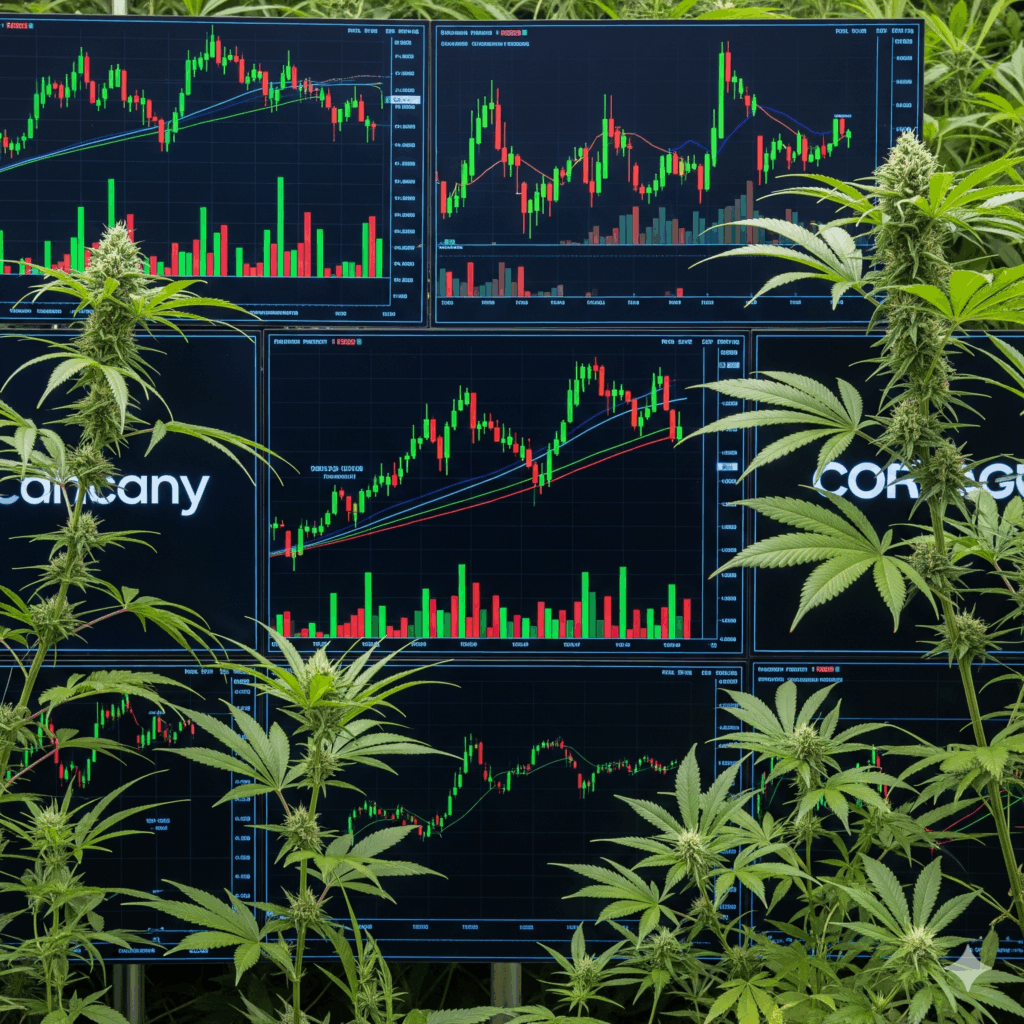Cannabis stocks are entering a catalyst-rich autumn. With U.S. rescheduling on the table and Canadian operators posting steadier results, upside exists—especially for High Tide, Tilray, and SNDL. But policy timing, pricing pressure, and capital costs loom. Here’s what just happened, why it matters, and the next trigger for explosive moves.
The state of play (last 90 days)
Momentum has been driven by Washington and better operating prints. In late August, reporting indicated the administration is weighing a shift to Schedule III—removing the punitive 280E tax and potentially easing banking and M&A constraints—though full federal legalization remains unlikely in the near term. (Reuters) Legal scholars and industry counsel stress that Schedule III would still keep cannabis regulated under the Controlled Substances Act; state markets would not instantly become “federal,” but rescheduling would be a pivotal tax and capital access win. (moritzlaw.osu.edu, Dentons) At the same time, movement in Congress around research and evidence-based policy underscores a slow, structural shift in federal posture—even if timelines are uncertain. (The Guardian) Counter-currents exist: some lawmakers have urged the White House to reject rescheduling, and procedural delays remain possible. (Cannabis Business Times)
Company scorecards
High Tide (HITI): In June (fiscal Q2 2025), High Tide generated $4.9 million in free cash flow and delivered 6.2% year-over-year growth in daily same-store sales across its Canna Cabana network—evidence of disciplined retail execution in a tough Canadian market. (hightideinc.com) Two weeks ago, management guided to record Q3 revenue and adjusted EBITDA and highlighted a two-year high in same-store sales growth; the company also continues to open stores in Saskatchewan and Ontario to extend share. (PR Newswire, hightideinc.com) While U.S. rescheduling doesn’t directly affect Canadian retail taxation, a friendlier U.S. capital environment can tighten spreads, lower risk premiums, and support valuations for profitable, cash-generating retailers like High Tide.
Tilray (TLRY): Tilray’s mix is now decisively beer-heavy. Industry trade press and financial media reported roughly $240–$241 million of beverage alcohol revenue in fiscal 2025 following acquisitions from Molson Coors and Anheuser-Busch—alongside a sizable non-cash impairment at the group level. (brewbound.com, Morningstar) Earlier filings highlighted 41% gross margin in beverage alcohol in Q1 FY25, a baseline for profitable cash generation that can fund cannabis adjacency and innovation. (ir.tilray.com) The strategy is clear: leverage scale distribution and brands to bridge into compliant cannabinoid-adjacent beverages now, then use that footprint to accelerate when regulatory doors open wider.
SNDL (SNDL): In August, SNDL posted Q2 2025 revenue of $244.8 million, gross profit of $67.6 million, and positive EPS (~$0.01), with cannabis operations revenue up 17.4% and growth returning in liquor retail. (sndl.com) Independent coverage highlighted the upside surprise and improved mix, underscoring operating progress after a volatile stretch. (Investing.com, TipRanks) Additional reporting detailed gains across cannabis retail and production, signaling better unit economics. (StratCann) SNDL’s integrated model—cultivation/processing, cannabis stores, and liquor—adds resilience and multiple levers for margin expansion.
Upside potential: High Tide, Tilray, SNDL
High Tide: With comps re-accelerating and free cash flow positive, a sector re-rating tied to U.S. policy progress could expand valuation multiples for profitable retailers. If same-store momentum holds and new locations ramp cleanly, HITI’s EBITDA trajectory supports a medium double-digit percentage upside over 12 months, with more if financing costs ease post-rescheduling. (PR Newswire, hightideinc.com)
Tilray: The beverage platform is now a scale asset. As regulators clarify rules around hemp-derived/THC-adjacent beverages and rescheduling improves banking confidence, TLRY can monetize cross-category innovation through its beer distribution. That optionality—plus cost work after impairments—creates asymmetric upside, potentially high double-digit percentage gains if execution meets improved sentiment. (brewbound.com, Morningstar)
SNDL: Positive EPS and revenue growth shift the debate from survival to compounding. Continued retail growth, tighter operations, and opportunistic M&A in a thawing capital market could justify a re-rating. Medium- to high double-digit percentage upside is plausible on sustained execution and sector multiple expansion. (sndl.com, Investing.com)
Sector upside, broadly
Rescheduling to Schedule III would remove 280E, allowing U.S. operators to deduct ordinary expenses—boosting free cash flow and de-risking balance sheets. Even though High Tide, Tilray, and SNDL are Canadian-domiciled, spillovers—ETF inflows, lower risk premiums, and revived M&A—tend to lift all boats. Analysts expect improved access to banking and institutional capital if rescheduling lands, even as interstate commerce and other federal constraints remain. (Reuters) Historically, policy momentum has coincided with sharp, multi-week rallies; a plausible scenario if DEA finalizes Schedule III and Treasury/FinCEN banking guidance follows is a meaningful sector multiple expansion from summer baselines. (Dentons)
Key risks to watch
- Policy drift: DEA has not yet finalized rescheduling; timelines can slip amid nominations, appeals, or litigation, and some lawmakers oppose the change. If the calendar slips, the sentiment bid unwinds. (Cannabis Business Times)
- Pricing and oversupply: Canada remains hyper-competitive, pressuring gross margins for retailers (High Tide) and producers (Tilray, SNDL). Promotional intensity can mute operating leverage—recent results show why mix and efficiency matter. (hightideinc.com, sndl.com)
- Capital markets: Equity remains dilutive and debt expensive; without durable cash generation, refinancing risk returns, particularly for acquisitive models.
- Accounting/impairments: Tilray’s FY25 impairment shows asset values can reset—creating headline risk even alongside operating progress. (brewbound.com)
- Execution: Store rollouts, SKU mix, and integration must deliver synergies on schedule; misses blunt any policy tailwind.
The next big thing (potentially explosive)
Two layered catalysts stand out. First, a definitive, court-resilient DEA rule to Schedule III—paired with explicit Treasury/FinCEN guidance that unlocks mainstream banking—would remove 280E, lower capital costs, and catalyze consolidation. That wave would likely re-rate Canadian peers via comparables, partnerships, and cross-border distribution deals. (Reuters) Second, a regulated opening for low-dose THC beverages—either through federal clarity or a critical mass of permissive state regimes—could let Tilray’s beverage network, High Tide’s retail reach, and SNDL’s multi-channel footprint commercialize cannabinoid drinks at scale. (ir.tilray.com, brewbound.com)
Bottom line for investors
High Tide is printing steady comps, free cash flow, and disciplined expansion—ingredients for a re-rating if sentiment improves. Tilray’s beverage engine and distribution heft create real optionality; impairments aside, the platform is built for cannabinoid beverages when rules allow. SNDL’s diversified model and improving profitability add torque. None are pure plays on U.S. 280E relief, but all can benefit from the liquidity and confidence it could unleash. Near term, trade the policy path; medium term, back operators showing cash discipline and pricing power. This is information, not investment advice.


